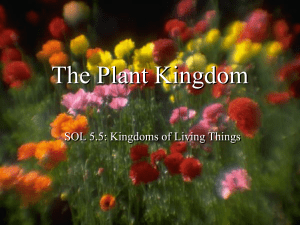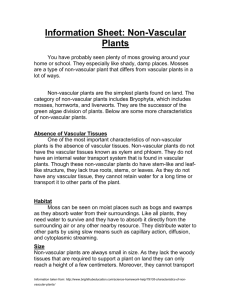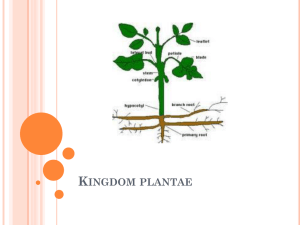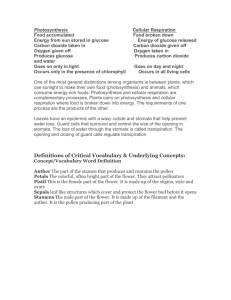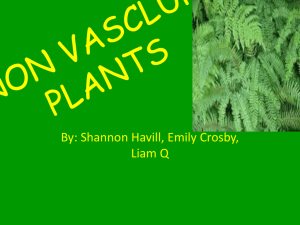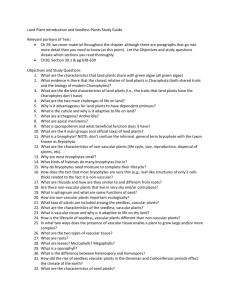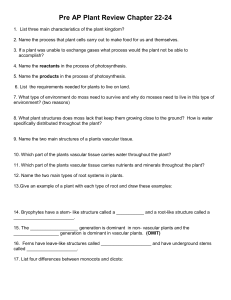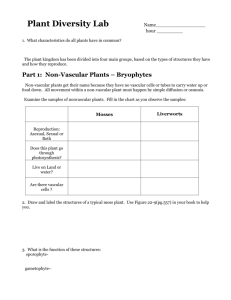The Plant Kingdom
advertisement
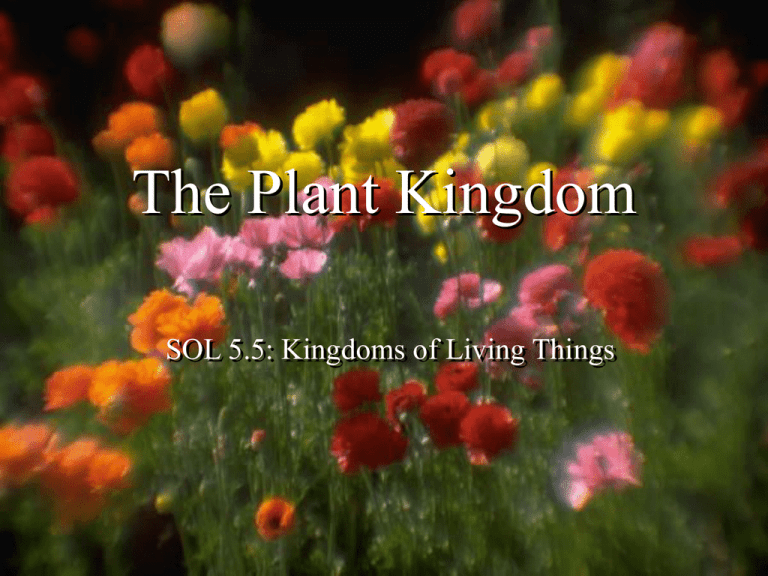
The Plant Kingdom SOL 5.5: Kingdoms of Living Things The Plant Kingdom • This kingdom has organisms that are multi-cellular, have cell walls and chlorophyll, produce their own food, and don’t physically move from one place to another. The Plant Kingdom • • • • • • Vascular Non-Vascular Photosynthesis Plant Cell Parts of a Flower SOL Released Test Items Non-Vascular • plants that do not have tubes to carry water up the plant or tubes to carry food made in the leaves down the plant • Examples: – – – – mosses liverworts ferns hornworts Non-Vascular • Spore: the reproductive cell of a nonvascular plant SPORES! Non-Vascular • Moss Non-Vascular • Liverwort Non-Vascular • Fern Non-Vascular • Hornwort Vascular • Plants that have tubes to carry water up and food down the plant • Examples: – American dogwood tree – roses – grass Vascular • American dogwood tree Vascular • Roses Vascular • Grass Photosynthesis • Plant cells produce their own food through a process called photosynthesis. • Photosynthesis allows plants to convert light energy into food energy. Parts of a Flower Male Parts Female Parts Parts of a Flower Male Parts Female Parts The stamen consists of two parts: the anther and the filament. The filament holds the anther. The anther produces and carries the pollen. Parts of a Flower Male Parts Female Parts The pistil consists of three parts: the stigma, style, and ovary. The stigma is the sticky part that traps and holds the pollen. The style is the tube-like structure that holds up the stigma. The ovary and the ovule are at the bottom of the style. Parts of a Flower Male Parts Female Parts The petals attract pollinators. (bees, hummingbirds, butterflies, for example) Parts of a Flower Male Parts Female Parts The sepals are the green petal-like parts at the base of the flower. Sepals help protect the developing bud. Plant Cell chloroplasts cell wall nucleus cell membrane cytoplasm vacuoles SOL Released Test Items
